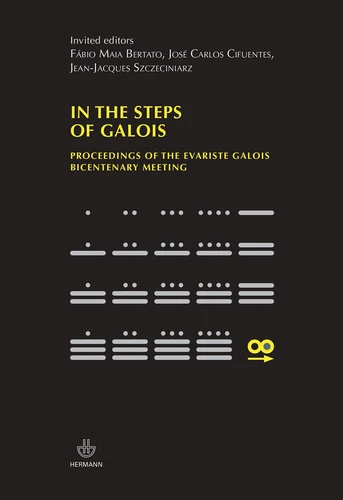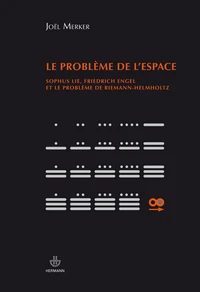In the steps of Galois. Proceedings of the Evarist Galois Bicentenary Meeting
Par : , ,Formats :
Disponible dans votre compte client Decitre ou Furet du Nord dès validation de votre commande. Le format PDF protégé est :
- Compatible avec une lecture sur My Vivlio (smartphone, tablette, ordinateur)
- Compatible avec une lecture sur liseuses Vivlio
- Pour les liseuses autres que Vivlio, vous devez utiliser le logiciel Adobe Digital Edition. Non compatible avec la lecture sur les liseuses Kindle, Remarkable et Sony
- Non compatible avec un achat hors France métropolitaine
 , qui est-ce ?
, qui est-ce ?Notre partenaire de plateforme de lecture numérique où vous retrouverez l'ensemble de vos ebooks gratuitement
Pour en savoir plus sur nos ebooks, consultez notre aide en ligne ici
- Nombre de pages206
- FormatPDF
- ISBN979-10-370-3411-3
- EAN9791037034113
- Date de parution24/04/2014
- Protection num.Adobe DRM
- Taille3 Mo
- Infos supplémentairespdf
- ÉditeurHermann
Résumé
The work of Evariste Galois, known today as Galois Theory, gave rise to modern mathematical thought with its characteristic abstraction and generality. 'Modern thought' makes reference to a movement whose characteristic was a break with tradition, a new self-criticism, and a trend toward abstraction and formal means of expression. Evariste Galois was involved in this movement as a mathematician, as well as by his uncompromising social and political commitments.
Galois Theory is essentially a dynamical theory that has and continues to evolve because of how it penetrates throughout the entirety of mathematical thought.
Its force is due to its deeply critical mind and its interdisciplinary, functoral conception of mathematics. This book offers to a wider public the proceedings of the "Evariste Galois Bicentenary Meetings". It presents various views on GT for different domains of the mathematical corpus, both for those linked to the 19 th century and those linked to the 20th century. The reader will observe that two principle orientations emerge, synchronically, from these analysis: that of algebraic geometry and that of logic.
There are thus two directions in which we can look for Galois' Legacy.
Its force is due to its deeply critical mind and its interdisciplinary, functoral conception of mathematics. This book offers to a wider public the proceedings of the "Evariste Galois Bicentenary Meetings". It presents various views on GT for different domains of the mathematical corpus, both for those linked to the 19 th century and those linked to the 20th century. The reader will observe that two principle orientations emerge, synchronically, from these analysis: that of algebraic geometry and that of logic.
There are thus two directions in which we can look for Galois' Legacy.
The work of Evariste Galois, known today as Galois Theory, gave rise to modern mathematical thought with its characteristic abstraction and generality. 'Modern thought' makes reference to a movement whose characteristic was a break with tradition, a new self-criticism, and a trend toward abstraction and formal means of expression. Evariste Galois was involved in this movement as a mathematician, as well as by his uncompromising social and political commitments.
Galois Theory is essentially a dynamical theory that has and continues to evolve because of how it penetrates throughout the entirety of mathematical thought.
Its force is due to its deeply critical mind and its interdisciplinary, functoral conception of mathematics. This book offers to a wider public the proceedings of the "Evariste Galois Bicentenary Meetings". It presents various views on GT for different domains of the mathematical corpus, both for those linked to the 19 th century and those linked to the 20th century. The reader will observe that two principle orientations emerge, synchronically, from these analysis: that of algebraic geometry and that of logic.
There are thus two directions in which we can look for Galois' Legacy.
Its force is due to its deeply critical mind and its interdisciplinary, functoral conception of mathematics. This book offers to a wider public the proceedings of the "Evariste Galois Bicentenary Meetings". It presents various views on GT for different domains of the mathematical corpus, both for those linked to the 19 th century and those linked to the 20th century. The reader will observe that two principle orientations emerge, synchronically, from these analysis: that of algebraic geometry and that of logic.
There are thus two directions in which we can look for Galois' Legacy.






















